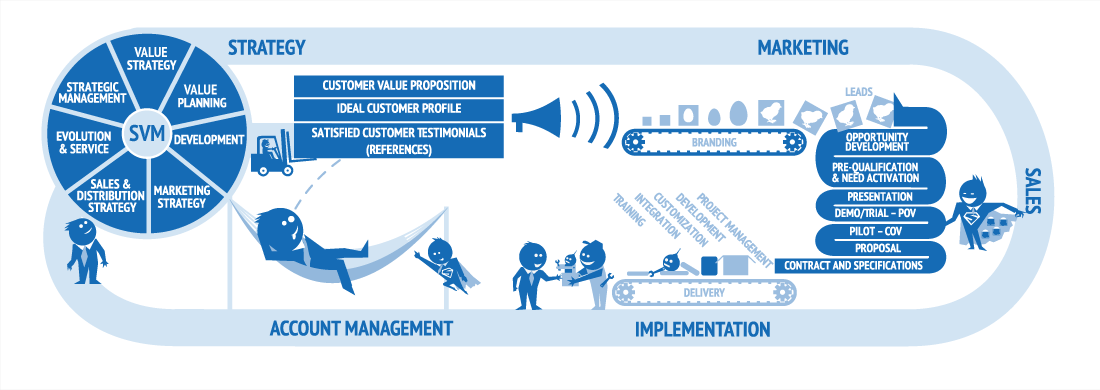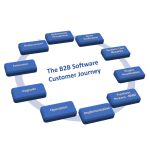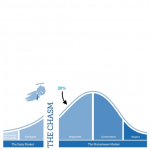Is Marketing and Sales Primarily Magic and Wizardry?
 Is marketing and sales primarily magic and wizardry?
Is marketing and sales primarily magic and wizardry?
Of course not, but the way we often talk about the need for special talent that is very hard to find feeds the myth that effective marketing and sales are reserved for the chosen few.
Is it really?
It probably still is, but this should soon be something of the past.
The volume of literature and the amount of online content available on marketing and sales best practises should give everyone with an interest for the subject a good opportunity to study what other successful companies do or have done, what experiences they have made and which approaches they recommend. It should be possible to get a broad theoretical foundation before we spend our company’s money and our own precious time in the real world.
Can you become a good marketeer by reading books and watching videos?
 Of course not, but you don’t become a good medical doctor, airline pilot, dentist, economist, lawyer etc. just by reading books either. Nevertheless it does require reading a substantial amount of literature, attending an endless number of classes where the key issues are presented and discussed, writing an endless number of papers reviewing other’s research and maybe even doing your own. In addition you must go on a number of field trips to get a feel for what the real world looks like. After you graduate will you get to practise what you have learned and over time you can become a real professional (unless you have a job where you can practice alongside your studies, then it happens much faster -> highly recommendable).
Of course not, but you don’t become a good medical doctor, airline pilot, dentist, economist, lawyer etc. just by reading books either. Nevertheless it does require reading a substantial amount of literature, attending an endless number of classes where the key issues are presented and discussed, writing an endless number of papers reviewing other’s research and maybe even doing your own. In addition you must go on a number of field trips to get a feel for what the real world looks like. After you graduate will you get to practise what you have learned and over time you can become a real professional (unless you have a job where you can practice alongside your studies, then it happens much faster -> highly recommendable).
The first challenge with marketing and sales is that they are such wide disciplines and changes happen faster than any textbook and university curriculum can keep up with. The second challenge is the situational nature, especially in sales situations. Books, videos and training can provide general guidelines, but reality is always (very?) different. So when there is no established and recognised educational path to officially qualify us for the positions in the industry, then it seems as though most people simply jump head first into the propaganda trap. Let’s just yell about our wonderful products and awesome company. We will disturb a vast audience to whom our messages have no relevance, but someone will hear us, will get it and sign up.
It becomes a numbers game and blind chickens also find seed.
Marketing and sales business process engineering
The time has come where we should recognise that marketing and sales are social science disciplines and that designing scalable revenue generation models is indeed possible. It is a business process engineering science that now has validated methodologies and a huge empiric knowledge base.
Note: SVM: Strategic Value Management.
Figuring out how we enable our potential customers to find us, engage with us, buy from us, stay with us and grow with us shouldn’t be tasks that we, for lack of insight, approach like the candy collection at Halloween. It will require a series of iterations before we get it right and we may have to change key elements in our business model (and communication approach) before we have something that can scale in a predictable manner, but we should get there faster and with less resources than was required in the previous century.
Irrespective of whether we are able to put an man on the moon (and bring him back again), dig a tunnel under the Fehmern Belt that’ll last a 100 years or develop a new car that can carry people comfortably and safely around in all types of weather for 10-15 years, do we have methods to meet the objectives with a very high probability of success? We will certainly draw on all the experience available from similar projects, and we will have to do a fair amount of innovation also to make it happen. We will expose the innovations to all kinds of simulations and testing before we commit any of them to production where we risk the life and welfare of human beings or a massive waste of resources.
What’s so different with sales and marketing?
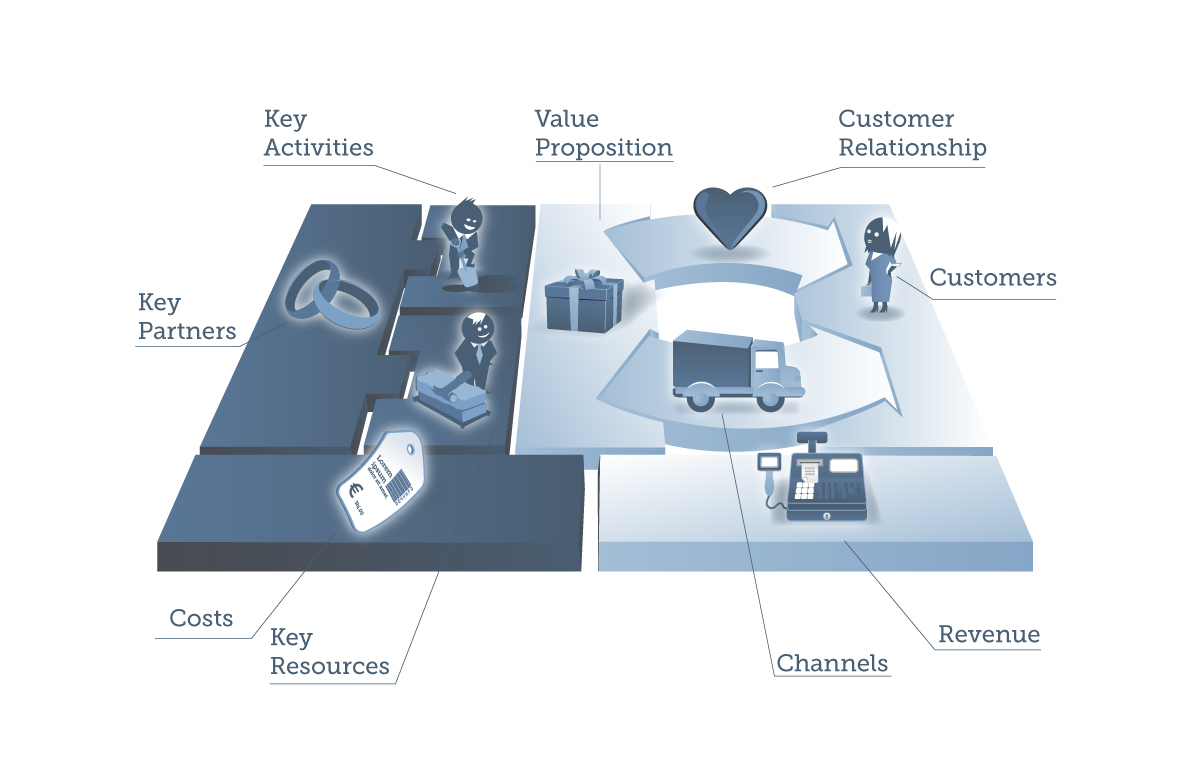 The technical back office of our business model is mostly governed by the laws from the natural sciences and are therefore highly predictable (leadership is an exception, but that’s a subject for another post on another day). If something doesn’t work then we can isolate the bug, reproduce it, fix it and the system will work again. If something breaks too soon we can experiment with new materials in the lab before we field test for final confirmation that it will now be more durable. It’s by no means trivial, but it obeys the law of physics. If we drop a pen it will fall to the floor – every time.
The technical back office of our business model is mostly governed by the laws from the natural sciences and are therefore highly predictable (leadership is an exception, but that’s a subject for another post on another day). If something doesn’t work then we can isolate the bug, reproduce it, fix it and the system will work again. If something breaks too soon we can experiment with new materials in the lab before we field test for final confirmation that it will now be more durable. It’s by no means trivial, but it obeys the law of physics. If we drop a pen it will fall to the floor – every time.
In marketing and sales we are dealing with human beings mostly outside our control (potential customers, opinion makers, competitors etc.) and are therefore governed by the laws of the social sciences. Substantial advances have been made in the social sciences over the last fifty years, but somehow most companies keep approaching their marketing and sales challenges while completely ignoring the knowledge pool available.
Why?
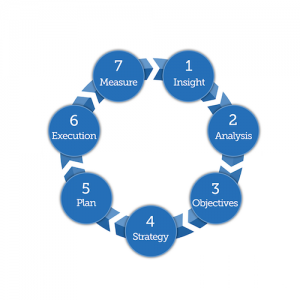 I think the main reason was the lack of reliable feedback from our marketing and sales processes in the last century. We could correlate our activities with KPI’s and revenue, but we didn’t really have an explanation for why something went right and something went wrong. You will remember the saying that half of our marketing budget doesn’t make any impact – we just don’t know which half it is. Today we can get much closer to finding the causal relationship between input and output, than we could just 10 years ago.
I think the main reason was the lack of reliable feedback from our marketing and sales processes in the last century. We could correlate our activities with KPI’s and revenue, but we didn’t really have an explanation for why something went right and something went wrong. You will remember the saying that half of our marketing budget doesn’t make any impact – we just don’t know which half it is. Today we can get much closer to finding the causal relationship between input and output, than we could just 10 years ago.
Isolating subsegments of our marketing and sales processes in a controlled laboratory environment is still difficult, but by applying information technology to our processes we can now get access to the same kind of analytics that was previously reserved for engineering and the natural sciences. We can get real-time operational data and we have tools to turn the data into information that we can act upon. We can isolate initiatives and measure the impact.
Another reason for treating marketing and sales as a magical black box was the gap between the scientific research and the practical experience from the fields of marketing and sales. Within the last 10 years this gap has been populated with an array of books reporting on the outcome of structured and methodic approaches to business development, marketing and sales.
Innovation is not only about products
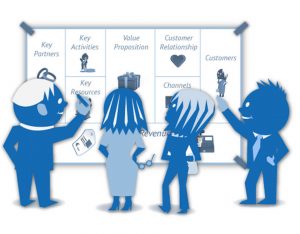 As we move forward in the connected world we will see innovation in how we communicate and deal with customers. We will see innovation in how we combine existing products and services to create new ways of better serving customer needs. We will see new services based on existing technology components. More and more innovation will be focused on sharing resources with improved user experience at much lower cost levels. These types of innovation are highly affected by human behaviour and cannot be developed, tested and delivered without applying social scientific approaches.
As we move forward in the connected world we will see innovation in how we communicate and deal with customers. We will see innovation in how we combine existing products and services to create new ways of better serving customer needs. We will see new services based on existing technology components. More and more innovation will be focused on sharing resources with improved user experience at much lower cost levels. These types of innovation are highly affected by human behaviour and cannot be developed, tested and delivered without applying social scientific approaches.
Maybe this will drive the business process engineering sciences into the ranks of marketing and sales, because those who continue to approach the challenges with the spirit of a demolition team will both look quite antiquated and fail to deliver improved productivity.
Recommended reading
I can only recommend books that I have actually read myself. Please let me know if you believe that a book is missing on the list. I will read it and add it if I find it valuable.
Neil Rackham: SPIN Selling (May 1988)
Michael Bosworth: Solution Selling: Creating Buyers in Difficult Selling Markets (September 1994)
Simon Sinek: Start with Why: How Great Leaders Inspire Everyone to Take Action (December 2011)
Jill Konrath: Selling to Big Companies (June 2012)
Larry Keely et al.: Ten Types of Innovation: The Discipline of Building Breakthroughs (April 2013)
Hans Peter Bech: Building Successful Partner Channels (April 2015)
David Meerman Scott: The New Rules of Marketing and PR, 4th Edition (September 2015)
Trish Bertuzzi: The Sales Development Playbook (January 2016)


